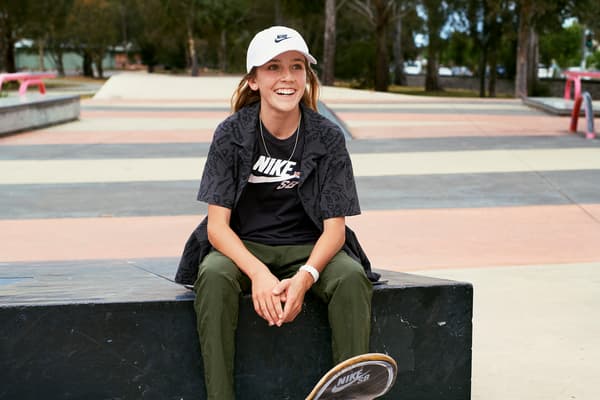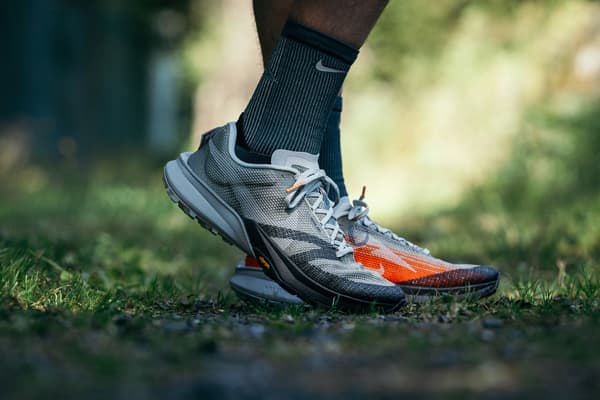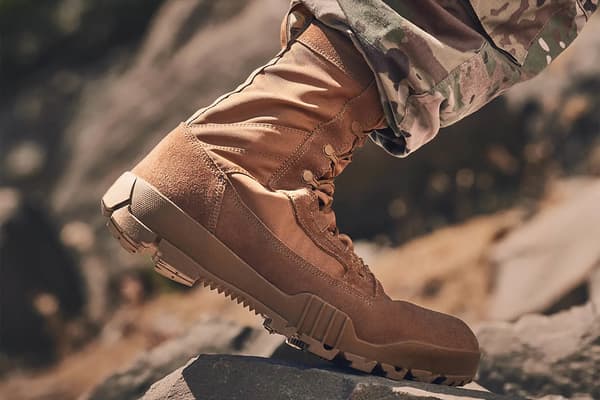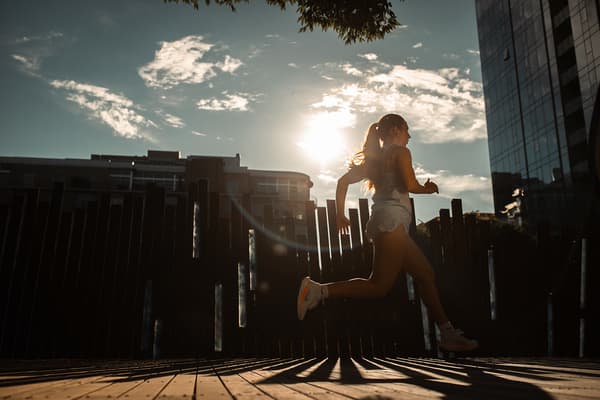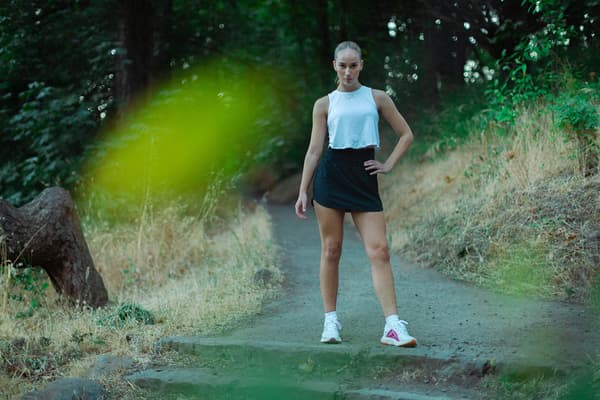Behind the Scenes: The Creation of Nike Women’s Elite Track and Field Kits
Product News
Bringing elite track and field kits to life takes three to four years from research to launch date.
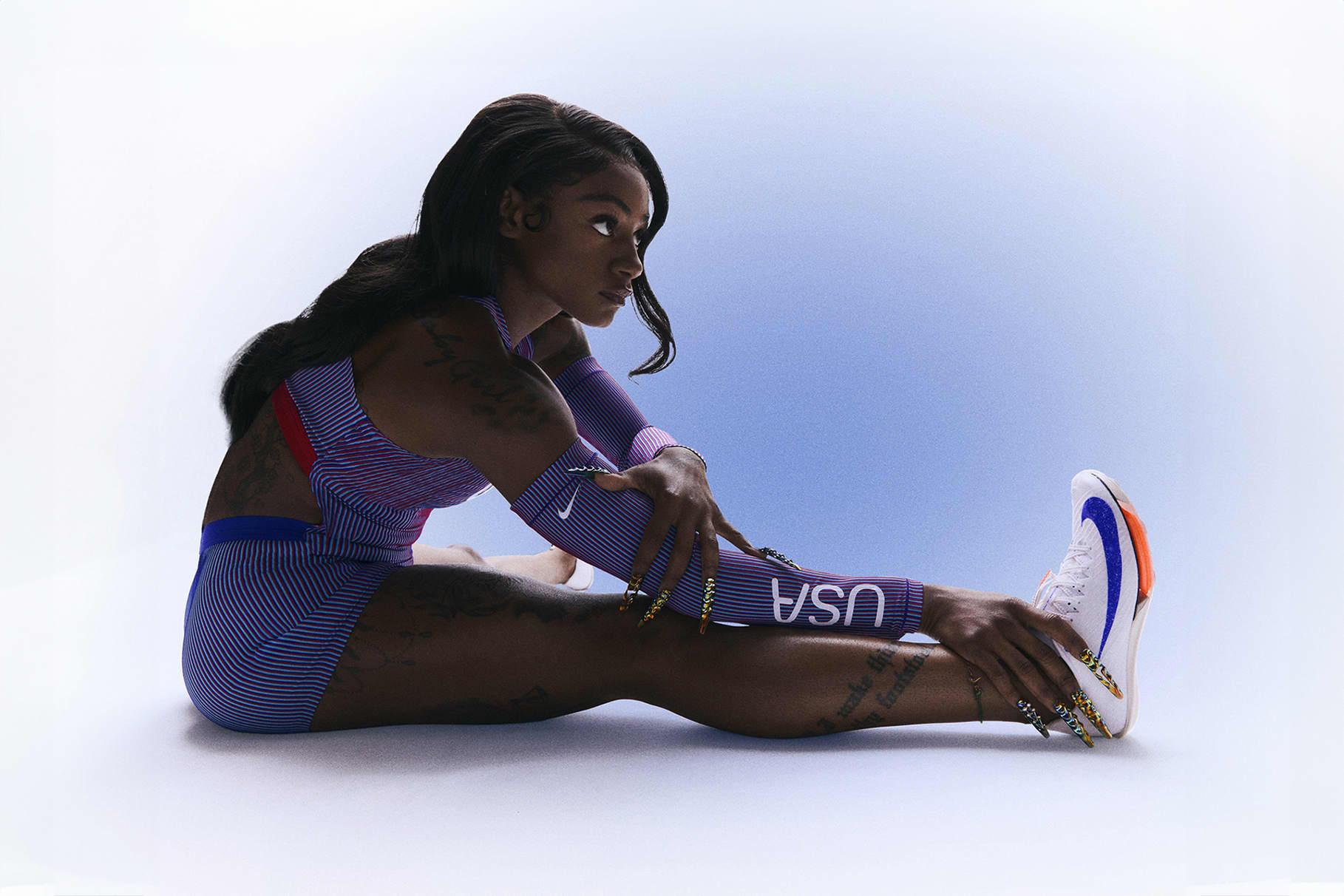
Creating elite track and field uniforms for Nike-sponsored federations in Paris is no small task. The design team plans years in advance, utilizing a multistep process that combines sports research, data and athlete feedback.
While most fans only see the final product, the behind-the-scenes innovation journey is continuous. The goal is to ensure that the Nike track and field kit uses the most up-to-date technology to address the diverse style preferences of elite athletes and maximize functionality and performance–specifically for the woman’s kit, keeping her needs in mind.
“Nike has a really collaborative process with their athletes,” distance runner Keira D’Amato told Citius Mag, a track and field publication. “For years, we’re testing out, we’re trying, we’re giving feedback. It’s not like we just go to a meeting and say, ‘We like this.’ They give us the uniforms, we take them home, we put them through the wear test in ways that we would wear them. We fill out surveys, we give our feedback, and I’m really proud of this collection because they designed it for us, with our feedback, directly and indirectly.”
From the beginning design process to wear-testing by athletes, here’s what goes into creating Nike track and field uniforms in advance of the summer 2024 festivities.

Creating for the Athlete: It Starts with Data
The 2024 sport collection is the most data-driven track and field kit Nike has ever crafted. The kit utilizes Nike NXT computational design and sports research, allowing for pixel-by-pixel and stitch-by-stitch level precision in the garments’ design and construction. Nike’s team studied athletes’ bodies in the sports research lab with 4D motion-captured data, looking at athletes in motion, zones of heat, sweat zones and more to map the breathability and stretch necessary for the ideal fit and range of motion.
The uniforms feature Dri-FIT ADV, innovative technologies that help create a high-performance microfiber and polyester sweat-wicking fabric. The goal is to keep athletes dry and comfortable as they compete.
Once Nike’s design team gathered the data, it sought to create a series of silhouettes to serve athletes across a range of events, considering different body types and size requirements as well as specialized uniforms tailored to the needs of all genders.
For the women’s track and field uniforms, the design team restructured built-in bras to allow female athletes to wear separate Swoosh bras under their uniforms. The result is a combination of pieces that work together. The pieces for men offer variety, with silhouettes based on body definition and specifications for each event.
Given how dynamic and diverse the sport of track and field is, innovation is critical. For example, Nike introduced new thrower tops that have a more relaxed fit to the body in a lighter material than the previous kit. The women’s version of the thrower top also features cutouts through the back shoulders for increased mobility and range of motion. The designers also prioritized versatility, adding a new women’s unitard to the line with a short bottom. They also designed the existing leotard option to be worn with shorts over the top if that’s how an athlete styles it.
“We’re accounting for genders and body types of all shapes and sizes and abilities,” Janett Nichol, Nike VP of Apparel Innovation, said. “In track and field, for example, the marathoner, the long jumper and the shot putter clearly need their apparel to perform differently. Data truly affects how we design in new and different ways. And in addition to using insights to innovate for performance, we also used athlete feedback for our kits’ aesthetics.”
The color direction for our competition kits in Paris is called Metaprism. It amplifies traditional federation shades by creating vibrations through color, using light and movement. Every kit uses a country’s national colors but pushes the color palette in a new direction while still channeling the federation’s traditional look and feel.
The uniforms for the preliminary and semifinal events primarily feature solid-colored tops, but the kits for the finals feature an all-over print—the first time Nike has created a special design for the finals. Thanks to the data visualization of the computational design team, the brand developed a unique concept known as "emotion of motion.”
In a groundbreaking move, the team converted Nike Sports Research Lab motion capture of a distance runner into an ever-evolving, color-coded particle field. These visualizations were translated directly into the “emotion of motion” graphic. Although the spectrum of track and field events is exceptionally broad, motion is the unifier, and these kits were created to celebrate athletic achievement at its highest order.
The result is nearly 50 styles and more than a dozen competition styles from which athletes can choose.

Creating With the Athlete: Feedback from Athletes is Crucial
Nike believes continuous athlete input is key to a successful uniform creation process. “Athletes were involved in the uniform creation process from start to finish,” said Sarah Gardner, lead product line manager, global apparel at Nike. In fact, Gardner said that design inspiration for the 2024 track and field uniform started in 2021 when Nike consulted with athletes at the USA Olympic Trials to get feedback on the previous year’s design. “Initial insights gathered at that moment allowed us to begin our design work, but gathering insights and meeting with athletes were a consistent part of our process,” she said.
Gardner said that, among other feedback, throwers shared that they wanted lighter tops with more performance-friendly materials. Men and women said they wanted tight-fitting bottom options that allowed them to move freely without drawing unwanted attention. “We heard from women the continued importance of having a lot of silhouette options to choose from on competition day, with the ability to layer with their bra or other uniform styles, as needed,” she said. “All this feedback, plus more, was integrated into our new uniforms.”
Once the designers had prepared the new prototypes, Nike asked athletes to test them and provide their opinions on factors like material weight and overall comfort. Nike carefully considered those responses—a critical part of the lengthy feedback process—for the final design.
As a result of athlete input, Nike redesigned the women’s singlet and throwing top, and an alternative singlet style was created with a more modest look. The team completed a redesign of the women’s singlet to provide more chest, underarm and back coverage than the previous uniform.
The designers also added new liner material to men’s and women’s gussets for extra coverage through the front of the body. The warm-up line now includes new layering options, while the material on the waterproof rain jacket and pants was changed to a waterproof stretch woven with more give.
Hurdler Anna Cockrell, who competed at Tokyo in 2021, shared that the uniform for that competition was “really beautiful,” but she ultimately felt like it was too form-fitting and didn’t move as well as she would have preferred. Nike took this feedback into account for the 2024 kits. “The uniform this year, as far as the way it flexes and the way it moves, is much, much improved,” she said.
Cockrell said that she is a fan of the high hip points on the unitard on one of the women’s track and field uniforms. “I personally love it,” she said. “I was one of the people when we tested the uniform that advocated for it.”

Creating for and With the Athlete: Athletes Can Engage in Pre-Competition Testing
When athletes qualify for the USA Olympic team, they complete a form with their sizing and preferred uniform styles. They also have the option to see and try out everything.
After that, uniforms are delivered to each athlete in advance. The athletes can then use the uniforms during practice and try different styles to determine their preferences.
The innovation doesn’t stop with Paris, though. “We are already talking to athletes to get their initial reactions to the uniform so that we can start understanding what we should focus on in our 2028 uniform update ahead of the LA Olympics,” Gardner said.
Words by Korin Miller
